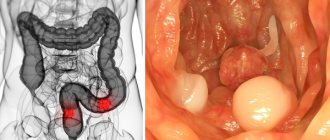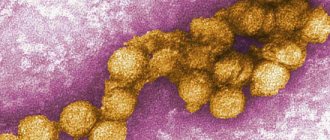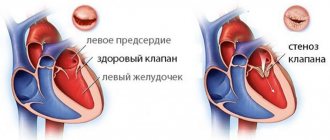Pneumonia in children is a fairly common disease, especially at a young age when the immune system is not yet fully developed. This is a lung infection caused by bacteria, fungi or viruses. It is important to carry out proper infection prevention and be attentive to the first symptoms of the disease that occur in young children. Currently, there is a highly effective treatment for pneumonia, but despite this, serious and dangerous complications are possible.
Bacterial pneumonia is characterized by a sudden onset with fever, respiratory distress, chest pain and deterioration in general condition. Symptoms vary depending on the patient's age. Among respiratory diseases, pneumonia is the leading single cause of childhood mortality worldwide, killing approximately 1.1 million patients before the age of 5 years.
Classification of pneumonia
Types of pneumonia are classified according to the cause. The type of microorganism involved, the location where the child was infected, and how the infection occurred are taken into account. According to the conditions of infection, hospital-acquired (nosocomial), intrauterine and community-acquired pneumonia in children is distinguished. The most common type of disease is the latter, which develops at home mainly against the background of ARVI.
Types of pneumonia in children according to the classification used in clinical practice:
· Focal.
The focus of infiltration has a diameter of 0.5 to 1 cm. Individual areas of infiltration can merge, which leads to the formation of a large focus.
· Segmental.
An entire segment of the lung may be involved in the inflammatory process. It is protracted and often complicated by fibrosis or deforming bronchitis.
· Croupous.
It is characterized by a hyperergic inflammatory process that affects the pleural area.
· Interstitial.
Accompanied by proliferation and infiltration of connective tissue. Develops when affected by fungi, viruses and pneumocystis.
According to the severity of the disease, complicated and uncomplicated pneumonia are distinguished. When complications develop, pulmonary edema, pulmonary insufficiency, pleurisy or abscess are observed. Cardiovascular disorders cannot be excluded.
Along the way, protracted and acute pneumonia in children are distinguished. In the second case, the disease resolves within 4-6 weeks. In a prolonged form, the inflammatory process persists for more than one and a half months. According to etiology, fungal, bacterial, viral and parasitic pneumonia are distinguished.
The clinical classification of childhood pneumonia is important for doctors, because, knowing the place and time of infection of the child, it is possible to determine the form of the pathogen that caused the pneumonia and, accordingly, prescribe effective treatment.
Bibliography
1. Freund A, Orjalo AV, Desprez PY, Campisi J. Inflammatory networks during cellular senescence: causes and consequences. Trends Mol Med (2010) 16(5):238–46. doi: 10.1016/j.molmed.2010.03.003 2. Singh T, Newman AB. Inflammatory markers in population studies of aging. Ageing Res Rev (2011) 10(3):319–29. doi: 10.1016/j.arr.2010.11.002 3. Trayhurn P. Endocrine and signaling role of adipose tissue: new perspectives on fat. Acta Physiol Scand (2005) 184(4):285–93. Review. doi: 10.1111/j.1365-201X.2005.01468.x 4. Schrager MA, Metter EJ, Simonsick E, Ble A, Bandinelli S, Lauretani F, et al. Sarcopenic obesity and inflammation in the InCHIANTI study. J Appl Physiol (2007) 102(3):919–25. doi: 10.1152/japplphysiol.00627.2006 5. Ortega Martinez de Victoria E, Xu X, Koska J, Francisco AM, Scalise M, Ferrante AW Jr, Krakoff J. Macrophage content in subcutaneous adipose tissue: associations with adiposity, age, inflammatory markers, and whole-body insulin action in healthy Pima Indians. Diabetes (2009) 58(2):385–93. 6. Weisberg SP, McCann D, Desai M, Rosenbaum M, Leibel RL, Ferrante AW. Obesity is associated with macrophage accumulation in adipose tissue. J Clin Invest (2003) 112(12):1796–808. doi: 10.1172/JCI200319246 7. Arnson Y, Shoenfeld Y, Amital H. Effects of tobacco smoke on immunity, inflammation and autoimmunity. J Autoimmun (2010) 34(3):J258–65. doi: 10.1016/j.jaut.2009.12.003 8. Straub RH, Schradin C. Chronic inflammatory systemic diseases: an evolutionary trade-off between acutely beneficial but chronically harmful programs. Evol Med Public Health (2016) 2016(1):eow001–51. doi: 10.1093/emph/eow001 9. Franceschi C, Campisi J. Chronic inflammation (inflammaging) and its potential contribution to age-associated diseases. J Gerontol A Biol Sci Med Sci (2014) 69(Suppl 1):S4–9. doi: 10.1093/gerona/glu057 10. Beyer I, Mets T, Bautmans I. Chronic low-grade inflammation and age-related sarcopenia. Curr Opin Clin Nutr Metab Care (2012) 15(1):12–22. doi: 10.1097/MCO.0b013e32834dd297 11. dall'olio F, Vanhooren V, Chen CC, Slagboom PE, Wuhrer M, Franceschi C. N-glycomic biomarkers of biological aging and longevity: a link with inflammaging. Ageing Res Rev (2013) 12(2):685–98. Review. doi: 10.1016/j.arr.2012.02.002 12. Ohtsubo K, Marth JD. Glycosylation in cellular mechanisms of health and disease. Cell (2006) 126(5):855–67. Review. doi: 10.1016/j.cell.2006.08.019 13. Parekh R, Isenberg D, Ansell B, Roitt I, Dwek R, Rademacher T. Galactosylation OF IgG associated oligosaccharides: reduction in patients with adult and juvenile onset rheumatoid arthritis AND relation to disease activity. Lancet (1988) 331(8592):966–9. doi: 10.1016/S0140-6736(88)91781-3 14. Vanhooren V, Desmyter L, Liu XE, Cardelli M, Franceschi C, Federico A, et al. N-glycomic changes in serum proteins during human aging. Rejuvenation Res (2007) 10(4):521–31. doi: 10.1089/rej.2007.0556 15. Ruhaak LR, Uh HW, Beekman M, Hokke CH, Westendorp RG, Houwing-Duistermaat J, et al. Plasma protein N-glycan profiles are associated with calendar age, family longevity and health. J Proteome Res (2011) 10(4):1667–74. doi: 10.1021/pr1009959 16. Zou S, Meadows S, Sharp L, Jan LY, Jan YN. Genome-wide study of aging and oxidative stress response in Drosophilamelanogaster. Proc Natl Acad Sci USA (2000) 97(25):13726–31. doi: 10.1073/pnas.260496697 17. Cingle KA, Kalski RS, Bruner WE, O'Brien CM, Erhard P, Wyszynski RE. Age-related changes of glycosidases in human retinal pigment epithelium. Curr Eye Res (1996) 15(4):433–8. doi: 10.3109/02713689608995834 18. Zhu M, Lovell KL, Patterson JS, Saunders TL, Hughes ED, Friderici KH. Beta-mannosidosis mice: a model for the human lysosomal storage disease. Hum Mol Genet (2006) 15(3):493–500. doi: 10.1093/hmg/ddi465 19. Zhang Q, Raoof M, Chen Y, Sumi Y, Sursal T, Junger W, et al. Circulating mitochondrial DAMPs cause inflammatory responses to injury. Nature (2010) 464(7285):104–7. doi: 10.1038/nature08780 20. dall'olio F, Vanhooren V, Chen CC, Slagboom PE, Wuhrer M, Franceschi C. N-glycomic biomarkers of biological aging and longevity: a link with inflammaging. Ageing Res Rev (2013) 12(2):685–98. doi: 10.1016/j.arr.2012.02.002 21. Kinross J, Nicholson JK. Gut microbiota: dietary and social modulation of gut microbiota in the elderly. Nat Rev Gastroenterol Hepatol (2012) 9(10):563–4. doi: 10.1038/nrgastro.2012.169 22. Claesson MJ, Cusack S, O'Sullivan O, Greene-Diniz R, de Weerd H, Flannery E, et al. Composition, variability, and temporal stability of the intestinal microbiota of the elderly. Proc Natl Acad Sci USA (2011) 108(Suppl. 1):4586–91. doi: 10.1073/pnas.1000097107 23. Toward R, Montandon S, Walton G, Gibson GR. Effect of prebiotics on the human gut microbiota of elderly persons. Gut Microbes(2012) 3(1):57–60. doi: 10.4161/gmic.19411 24. Claesson MJ, Jeffery IB, Conde S, Power SE, O'Connor EM, Cusack S, et al. Gut microbiota composition correlates with diet and health in the elderly. Nature (2012) 488(7410):178–84. doi: 10.1038/nature11319 25. de Magalhães JP, Passos JF. Stress, cell senescence and organismal aging. Mech Ageing Dev (2017). doi: 10.1016/j.mad.2017.07.001 26. Sanada F, Taniyama Y, Azuma J, Iekushi K, Dosaka N, Yokoi T, et al. Hepatocyte growth factor, but not vascular endothelial growth factor, attenuates angiotensin II-induced endothelial progenitor cell senescence. Hypertension (2009) 53(1):77–82. doi: 10.1161/HYPERTENSIONAHA.108.120725 27. Tchkonia T, Zhu Y, van Deursen J, Campisi J, Kirkland JL. Cellular senescence and the senescent secretory phenotype: therapeutic opportunities. J Clin Invest (2013) 123(3):966–72. doi: 10.1172/JCI64098 28. He S, Sharpless NE. Senescence in health and disease. Cell (2017) 169(6):1000–11. doi: 10.1016/j.cell.2017.05.015 29. Childs BG, Baker DJ, Wijshake T, Conover CA, Campisi J, van Deursen JM. Senescent intimal foam cells are deleterious at all stages of atherosclerosis. Science (2016) 354(6311):472–477. doi: 10.1126/science.aaf6659 30. Jeon OH, Kim C, Laberge RM, Demaria M, Rathod S, Vasserot AP, et al. Local clearance of senescent cells attenuates the development of post-traumatic osteoarthritis and creates a pro-regenerative environment. Nat Med (2017) 23(6):775–81. doi: 10.1038/nm.4324 31. Baker DJ, Wijshake T, Tchkonia T, Lebrasseur NK, Childs BG, van de Sluis B, et al. Clearance of p16Ink4a-positive senescent cells delays aging-associated disorders. Nature (2011) 479(7372):232–6. doi: 10.1038/nature10600 32. Shaw AC, Goldstein DR, Montgomery RR. Age-dependent dysregulation of innate immunity. Nat Rev Immunol (2013) 13(12):875–87. doi: 10.1038/nri3547 33. Aw D, Silva AB, Palmer DB. Immunosenescence: emerging challenges for an aging population. Immunology (2007) 120(4):435–46. doi: 10.1111/j.1365-2567.2007.02555.x 34. Gruver AL, Hudson LL, Sempowski GD. Immunosenescence of aging. J Pathol (2007) 211(2):144–56. Review. doi: 10.1002/path.2104 35. Chu AJ. Blood coagulation as an intrinsic pathway for proinflammation: a mini review. Inflamm Allergy Drug Targets (2010) 9(1):32–44. Review. doi: 10.2174/187152810791292890 36. Hess K, Grant PJ. Inflammation and thrombosis in diabetes. Thromb Haemost (2011) 105(Suppl 1):S43–54. doi: 10.1160/THS10-11-0739 37. Sanada F, Taniyama Y, Muratsu J, Otsu R, Iwabayashi M, Carracedo M, et al. Activated factor X induces endothelial cell senescence through IGFBP-5. Sci Rep (2016) 6:35580. doi: 10.1038/srep35580 38. Biagi E, Candela M, Franceschi C, Brigidi P. The aging gut microbiota: new perspectives. Aging Res. Rev. (2011) 10(4):428–9. doi: 10.1016/j.arr.2011.03.004 39. Chu AJ. Tissue factor, blood coagulation, and beyond: an overview. Int J Inflam (2011) 2011:367284–30. doi: 10.4061/2011/367284 40. Favaloro EJ, Franchini M, Lippi G. Aging hemostasis: changes to laboratory markers of hemostasis as we age - a narrative review. Semin Thromb Hemost (2014) 40(6):621–33. doi: 10.1055/s-0034-1384631 41. Sanada F, Muratsu J, Otsu R, Shimizu H, Koibuchi N, Uchida K, et al. Local production of activated factor X in atherosclerotic plaque induced vascular smooth muscle cell senescence. Sci Rep (2017) 7(1):17172. doi: 10.1038/s41598-017-17508-6 42. Mega JL, Braunwald E, Wiviott SD, Bassand JP, Bhatt DL, Bode C, et al. ATLAS ACS 2–TIMI 51 Investigators. Rivaroxaban in patients with a recent acute coronary syndrome. N Engl J Med (2012) 366(1):9–19. 43. Spronk HM, de Jong AM, Crijns HJ, Schotten U, van Gelder IC, Ten Cate H. Pleiotropic effects of factor Xa and thrombin: what to expect from novel anticoagulants. Cardiovasc Res (2014) 101(3):344–51. doi: 10.1093/cvr/cvt343 44. Kamio N, Hashizume H, Nakao S, Matsushima K, Sugiya H. Plasmin is involved in inflammation via protease-activated receptor-1 activation in human dental pulp. Biochem Pharmacol (2008) 75(10):1974–80. doi: 10.1016/j.bcp.2008.02.018 45. Carmo AA, Costa BR, Vago JP, de Oliveira LC, Tavares LP, Nogueira CR, et al. Plasmin induces in vivo monocyte recruitment through protease-activated receptor-1-, MEK/ERK-, and CCR2-mediated signaling. J Immunol (2014) 193(7):3654–63. doi: 10.4049/jimmunol.1400334 46. Kojima H, Kunimoto H, Inoue T, Nakajima K. The STAT3-IGFBP5 axis is critical for IL-6/gp130-premature senescence in human fibroblasts. Cell Cycle (2012) 11(4):730–9. doi: 10.4161/cc.11.4.19172 47. Yasuoka H, Hsu E, Ruiz XD, Steinman RA, Choi AM, Feghali-Bostwick CA. The fibrotic phenotype induced by IGFBP-5 is regulated by MAPK activation and egr-1-dependent and -independent mechanisms. Am J Pathol (2009) 175(2):605–15. doi: 10.2353/ajpath.2009.080991 48. Sparkenbaugh EM, Chantrathammachart P, Mickelson J, van Ryn J, Hebbel RP, Monroe DM, et al. Differential contribution of FXa and thrombin to vascular inflammation in a mouse model of sickle cell disease. Blood (2014) 123(11):1747–56. doi: 10.1182/blood-2013-08-523936 49. Roos CM, Zhang B, Palmer AK, Ogrodnik MB, Pirtskhalava T, Thalji NM, et al. Chronic senolytic treatment alleviates established vasomotor dysfunction in aged or atherosclerotic mice. Aging Cell (2016) 15(5):973–7. doi: 10.1111/acel.12458 50. Lehmann M, Korfei M, Mutze K, Klee S, Skronska-Wasek W, Alsafadi HN, et al. Senolytic drugs target alveolar epithelial cell function and attenuate experimental lung fibrosis ex vivo. Eur Respir J (2017) 50(2):1602367. doi: 10.1183/13993003.02367-2016 51. Collins JA, Diekman BO, Loeser RF. Targeting aging for disease modification in osteoarthritis. Curr Opin Rheumatol (2017). 52. Farr JN, Xu M, Weivoda MM, Monroe DG, Fraser DG, Onken JL, et al. Targeting cellular senescence prevents age-related bone loss in mice. Nat Med (2017) 23(9):1072–9. doi: 10.1038/nm.4385
Disclaimer: All statements expressed in this article are the views of the authors and do not necessarily reflect the views of affiliated organizations, the publisher, editors and reviewers. Any product or manufacturer's statement is not warranted or endorsed by the publisher.
Treatment of pneumonia in children
There are several treatment methods for pneumonia that are aimed at relieving symptoms and neutralizing the existing infection. In case of bilateral pneumonia in children, urgent hospitalization in a hospital is recommended, and in severe cases - in the intensive care unit.
To treat pneumonia in children, the following is carried out:
· elimination of infectious and inflammatory process in the lungs;
· detoxification of the body;
· elimination of respiratory failure.
Etiological treatment is carried out immediately after admission to the hospital, after taking samples of biomaterial for bacteriological examination.
Today, for the treatment of pneumonia in children, it has been decided to use step-by-step antibacterial therapy:
To improve the condition, antibiotics are prescribed parenterally (intravenously, intramuscularly), then orally;
· detoxification is carried out by drip parenteral crystalloids, glucose-physiological solution, diuretics;
· if necessary, oxygen therapy is prescribed to correct the composition of gas in the blood (in case of respiratory alkalosis), and in severe cases, it is connected to a mechanical ventilation device;
· to improve the outflow of mucus from the lungs, bronchodilators are prescribed;
· For persistent dry cough, antitussives are prescribed.
After normalizing body temperature, it is recommended to conduct a course of massage, physiotherapeutic procedures, and therapeutic exercises.
Even when the likelihood of a bacterial infection is high, it takes time to identify the bacteria involved and choose the best antibiotic to eliminate it. For viral pneumonia, specific antiviral drugs can be used. If the causative agent is a fungus, then the doctor prescribes antifungal drugs. To increase the effectiveness of treatment, your doctor may recommend using a nebulizer.
Profile No. 16, Inflammatory activity
Home / Profile No. 16, Inflammatory activity
Article rating: 4.77 (56)
C-reactive protein
is determined in serum during various inflammatory and necrotic processes and is an indicator of the acute phase of their course. It got its name because of its ability to precipitate C-polysaccharide from the cell wall of pneumococcus. C-reactive protein enhances the mobility of leukocytes. By binding to T-lymphocytes, it affects their functional activity, initiating reactions of precipitation, agglutination, phagocytosis and complement fixation. An increase in CRP in the blood begins 14-24 hours after the onset of inflammation and disappears during convalescence. CRP is synthesized in the liver and consists of 5 ring subunits. In the presence of calcium, CRP binds ligands in microbial polysaccharides and causes their elimination. Quantitative determination of CRP is of important diagnostic value. An increase in CRP concentration is the earliest sign of infection, and effective therapy is indicated by a decrease in concentration. Its level reflects the intensity of the inflammatory process, and its control is important for monitoring these diseases. CRP during the inflammatory process can increase 20 times or more. With an active rheumatic process, an increase in CRP is found in most patients. In parallel with the decrease in the activity of the rheumatic process, the content of CRP also decreases. A positive reaction in the inactive phase may be due to focal infection (chronic tonsillitis). Rheumatoid arthritis is also accompanied by an increase in CRP (a marker of process activity), however, its determination cannot help in the differential diagnosis between rheumatoid arthritis and rheumatic polyarthritis. The concentration of CRP is directly dependent on the activity of ankylosing spondylitis. In SLE (especially in the absence of serositis), the CRP value is usually not increased. During myocardial infarction, C-reactive protein increases 18-36 hours after the onset of the disease, decreases by 18-20 days, and returns to normal by 30-40 days. With recurrent heart attacks, CRP rises again. With angina pectoris, it remains within normal limits. C-reactive protein is one of the tumor-inducible markers. Its synthesis increases in response to the appearance of tumors of various localizations in the body. An increase in CRP levels is observed in lung, prostate, stomach, ovarian and other tumors. Despite its nonspecificity, CRP, together with other tumor markers, can serve as a test for assessing tumor progression and disease relapse. An increase in the level of C-reactive protein is characteristic of rheumatism, acute bacterial, fungal, parasitic and viral infections, endocarditis, rheumatoid arthritis, tuberculosis, peritonitis, myocardial infarction, conditions after major operations, malignant neoplasms with metastases, multiple myeloma.
Ceruloplasmin
is a protein with a molecular weight of about 150,000 daltons, contains 8 Cu+ ions and 8 Cu2+ ions. The main copper-containing plasma protein is alpha-2-globulin; it accounts for 3% of total body copper and over 95% of serum copper. Ceruloplasmin has pronounced oxidase activity; in plasma, it also limits the release of iron stores, activates the oxidation of ascorbic acid, norepinephrine, serotonin and sulfhydryl compounds, and inactivates reactive oxygen species, preventing lipid peroxidation. Insufficiency of ceruloplasmin (decrease in its content in the blood) due to disruption of its synthesis in the liver causes Wilson-Konovalov disease (hepatocerebral degeneration). With ceruloplasmin deficiency, copper ions enter the extravascular space (copper content in the blood also decreases). They pass through the basement membranes of the kidneys into the glomerular filtrate and are excreted in the urine or accumulate in connective tissue (for example, in the cornea). For the manifestation of signs of the disease, the degree of copper accumulation in the central nervous system is of particular importance. Insufficiency of copper ions in the blood (due to ceruloplasmin deficiency) leads to an increase in their resorption in the intestine, which further contributes to its accumulation in the body with subsequent effects on a number of vital processes. Low levels of ceruloplasmin in the blood serum are also observed in nephrotic syndrome, diseases of the gastrointestinal tract, and severe liver diseases due to its loss and impaired synthesis. Ceruloplasmin is an acute phase protein (half-life 6 days), so an increase in its level is observed in patients with acute and chronic infectious diseases, liver cirrhosis, hepatitis, myocardial infarction, systemic diseases, lymphogranulomatosis. An increase in ceruloplasmin levels is observed in patients with schizophrenia. The content of ceruloplasmin in blood serum increases in case of malignant neoplasms of various localizations (lung, breast, cervical, gastrointestinal tract cancer) by 1.5-2 times, reaching more significant values with the prevalence of the process. Successful chemical and radiation treatment is accompanied by a decrease in ceuloplasmin levels down to normal levels. When combination therapy is ineffective, as well as when the disease progresses, the content of ceruloplasmin remains high.
Haptoglobin
- a protein that binds free hemoglobin, preventing its removal from the body. This is an acute phase protein of inflammation that has the ability to bind free hemoglobin released from red blood cells, preventing the removal of hemoglobin from the body and kidney damage. It, like transferrin and ceruroplasmin, belongs to proteins that represent the most ancient immune defense system of the body. The binding of toxic free hemoglobin occurs with the a-globin chains of hemoglobins A, F, S and C. Haptoglobin does not bind methemoglobin, heme and abnormal forms of hemoglobin in which alpha chains are absent. The haptoglobin-hemoglobin complex is rapidly taken up from the circulating blood by reticuloendothelial cells, thereby preventing or minimizing the loss of hemoglobin and iron. With hemolysis of erythrocytes, a rapid decrease in plasma haptoglobin levels is observed. Normally, about 1% of red blood cells are destroyed and removed from circulation per day. An increase in this amount to 2% leads to the complete disappearance of haptoglobin (in the absence of such stimuli for its production as acute inflammation or corticosteroid therapy). In pathologies associated with ineffective hematopoiesis and destruction of red blood cells in some hemoglobinopathies, a chronic decrease in the level of haptoglobin (and hemopexin) is observed. Free hemoglobin dimers can pass through the renal filter, being reabsorbed and catabolized by the incorporation of iron into cellular ferritin and hemosiderin. When the capacity for proximal reabsorption is saturated, free hemoglobin is excreted into the urine. Iron in renal tubular cells can reach toxic levels that cause kidney dysfunction. A decrease in haptoglobin (in the absence of other factors affecting its production) is a sensitive marker of intravascular hemolysis. Haptoglobin synthesis occurs primarily in the liver, but also in adipose tissue and the lungs. Stimulated (via cytokines) by inflammation, but not by hemolysis or decreased haptoglobin levels. The peak increase is observed 4–6 days after stimulation; reduction to normal levels - within 2 weeks after removal of stimulating factors. It has now been demonstrated that free haptoglobin and its complexes with hemoglobin play an important role not only in maintaining iron reserves, but also in the control of local inflammatory processes. They are powerful peroxidases that hydrolyze peroxides released during the action of phagocytes; haptoglobin also inhibits cathepsin B and modulates the activity and proliferation of leukocytes at the site of inflammation. Complexation of hemoglobin with haptoglobin prevents its stimulation of lipid peroxidation and the formation of hydroxyl radicals in areas of inflammation. Haptoglobin is considered a natural bacteriostatic agent in infections with Fe-dependent bacteria (for example, Escherichia coli), which is possibly due to the prevention of their use of hemoglobin iron. Long-lasting high haptoglobin values are a sign of an unfavorable course of the disease. A decrease in haptoglobin concentration is most often observed in diseases accompanied by intravascular hemolysis or increased release of hemoglobin, for example, hemolytic anemia, post-transfusion hemolysis and malaria. Extravascular hemolysis usually does not lead to changes in haptoglobin concentration. In addition, a decrease in haptoglobin concentration can be observed with congenital ahaptoglobulinemia and severe liver diseases with impaired protein synthesis. Artificial heart valves and intense exercise, accompanied by constant mechanical damage to red blood cells, can also lead to a decrease in haptoglobin levels.
General blood analysis
shows: the number of erythrocytes, platelets, the total content of hemoglobin in the blood, the number of leukocytes and the ratio of their different types, erythrocyte sedimentation rate (ESR), leukocyte formula. Red blood cells contain hemoglobin and carry oxygen and carbon dioxide. A decrease in red blood cells in the blood is characteristic of anemia (lack of iron, protein, vitamins), an increase in the number of red blood cells is a sign of leukemia, chronic lung diseases, and congenital heart defects. Blood hemoglobin is involved in the transport of oxygen and carbon dioxide and maintains pH balance. A decrease in hemoglobin occurs with a lack of iron, a necessary material for the construction of hemoglobin, and is observed with anemia of various etiologies and blood loss. Increased hemoglobin is typical for people with congenital heart defects and pulmonary heart failure. An increase in hemoglobin can be caused by physiological reasons - after significant physical activity, in pilots after flights, in climbers. Leukocytes are the protectors of our body from foreign components. They fight viruses and bacteria and cleanse the blood of dying cells. There are several types of leukocytes (monocytes, lymphocytes, eosinophils, basophils, etc.). The leukocyte formula allows you to calculate the content of these forms of leukocytes in the blood. An increase in the number of leukocytes can be physiological (for example, during digestion, pregnancy) and pathological - in some acute and chronic infections, inflammatory diseases, intoxications, severe oxygen starvation, allergic reactions and in people with malignant tumors and blood diseases. Radiation injury and contact with a number of chemicals (benzene, arsenic, DDT, etc.) lead to a decrease in the number of leukocytes; taking medications (cytostatic drugs, some types of antibiotics, sulfonamides, etc.). Leukopenia occurs with viral and severe bacterial infections, diseases of the blood system. Platelets are anucleate cells that are “fragments” of the cytoplasm of bone marrow megakaryocytes. The main role of platelets in the body is to participate in blood clotting. Their number may decrease with hereditary thrombocytopenia, blood diseases (aplastic anemia, megaloblastic anemia, leukemia), bone marrow damage (neoplasm metastases, tuberculosis, ionizing radiation). Increases in chronic inflammatory diseases, bleeding, after operations. The erythrocyte sedimentation rate (ESR) determines how quickly red blood cells settle in a test tube and separate from the blood plasma. Changes in erythrocyte sedimentation rate are not specific to any disease. However, accelerated erythrocyte sedimentation always indicates the presence of a pathological process. Contains tests that provide information about the presence or absence of an inflammatory process in the body.
- C – reactive protein (CRP)
- Ceruloplasmin
- Haptoglobin
- General blood test with formula, ESR
Profile cost
– 1967 rub.
Preparing for analysis
Note:
Blood sampling for testing is paid additionally. The cost of taking blood is 100 rubles.
© 2013 - 2021 copyright holder LLC "TIAS LOTUS"
History and philosophy of the company Personal data processing policy For citizens with disabilities Preparation for analyzes Phone numbers of higher-level organizations State guarantee program Payment methods Help for the Federal Tax Service Contacts Our partners
Gemohelp mobile application
8-800-100-08-05
Call if you have any questions
By using the website gemohelp.ru, you agree to the use of cookies
I confirm
More details
Select city:
- Arzamas
- Balakhna
- Bogorodsk
- Bor
- Vacha
- Vyksa
- Dzerzhinsk
- Trans-Volga region
- Kstovo
- Kulebaki
- Lukoyanov
- Lyskovo
- Moore
- Navashino
- Nizhny Novgorod
- Pavlovo
- Sarov
- Semenov
- Sosnovskoe
- Cheboksary
- Chkalovsk
Confirm
Prognosis and prevention
The best treatment for pneumonia is prevention. Vaccines are available for children from two months of age. It is important to take care of the diet of a patient with pneumonia. During treatment, rest, bed rest and plenty of fluids are recommended to prevent dehydration of the baby's body after the formation of a large amount of mucus and due to increased sweating.
Typically, at the onset of the disease, children experience loss of appetite, but as they recover, it returns to normal. A healthy and nutritious diet is recommended to avoid nutritional deficiencies that can lead to other disorders in the body.
It is necessary to control the environment in which the patient is located, whether in a medical facility or at home. Avoid the presence of smoke (such as tobacco) or other lung irritants that may aggravate the condition.
After discharge from the hospital, children require clinical observation and rehabilitation measures. It is also recommended to strictly follow the doctor’s recommendations after recovery, correct daily routine, and moderate intake of vitamins as a preventive measure. Dosed physical activity contributes to the overall recovery of children and can prevent recurrence of pneumonia.
Pneumonia in children - treatment at the RebenOK clinic in Moscow
Our medical center employs pediatricians who have extensive practical experience. Treatment of pneumonia in children is carried out after confirming the diagnosis and determining the type of pathogen, which allows you to get a quick result. Competent specialists determine the symptoms of latent pneumonia in children, which occurs without fever and wheezing.
If signs of a cold appear, it is recommended to consult a pediatrician to rule out the presence of pneumonia or prevent the development of the disease. We use modern diagnostic equipment and prescribe treatment in accordance with international protocols, taking into account the individual characteristics of the patient.
Literature:
1. Erzhanova G.E. Pneumonia in children // Bulletin of the Kazakh National Medical Institute, 2014. URL: https://cyberleninka.ru/article/n/pnevmonii-u-detey (access date: 09/02/2021)
2. Sergeeva E.V., Petrova S.I. Community-acquired pneumonia in children. Modern features // Pediatrician Magazine, 2021. URL: https://cyberleninka.ru/article/n/vnebolnichnaya-pnevmoniya-u-detey-sovremennye-osobennosti (access date: 09/02/2021)
3. Geppe N.A., Kozlova L.V., Kondurina E.G. Community-acquired pneumonia in children // Clinical manual "Moscow Society of Children's Doctors", 2021. URL: https://pulmodeti.ru/wp-content/uploads/Vnebolnichnaya.pdf (access date: 09/02/2021)
4. Petchenko A.I., Luchaninova V.N., Knysh S.V.
Age-related features of the course of community-acquired pneumonia in children // Journal “Fundamental Research” No. 2, 2014. URL: https://fundamental-research.ru/ru/article/view?id=33563 (access date: 09/02/2021) 5. Kakeeva A.A., Bokonbaeva S.D., Dzhanabilova G.A. Etiological structure of community-acquired pneumonia in young children // Journal “Modern Problems of Science and Education” No. 3, 2021. URL: https://science-education.ru/ru/article/view?id=30897 (access date: 02.09. 2021)









